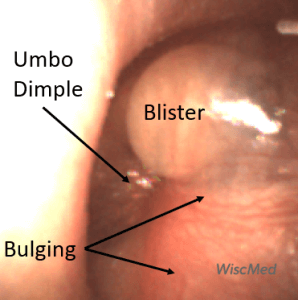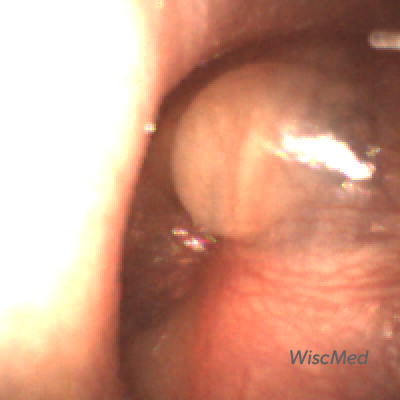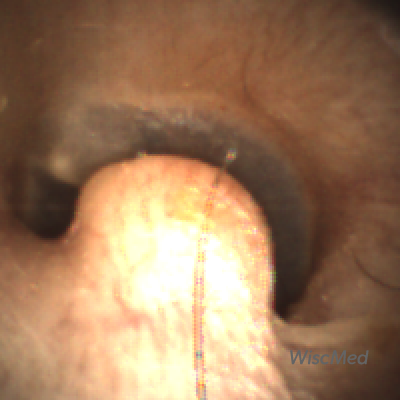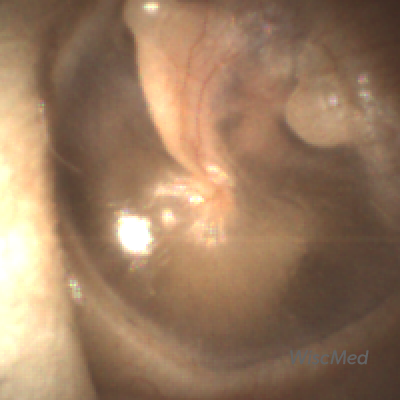
Bullous Myringitis – July 13, 2023
A colleague asks you to consult on a tympanic membrane image obtained with the Wispr digital otoscope. To challenge you, your colleague does not provide you with any clinical information. Which of the following statements is most likely true?
- This is a young child who has had several days of viral symptoms.
- This is an individual that is exposed to cold water frequently.
- This patient requires urgent consultation with otolaryngology (ENT).
- There is no indication for treatment at this time.
Answer: 1. This is a young child who has had several days of viral symptoms.

The child has bullous myringitis (BM). Classically a child with BM will present with several days of viral symptoms such as cough, congestion, and fever. The viral infection can lead to Eustachian tube dysfunction which allows for a bacterial infection to develop in the middle ear space. BM can be considered to be a variation of acute otitis media. Bullous myringitis includes the hallmarks of AOM including bulging, an umbo dimple, loss of bony landmarks, and erythema (redness). In addition, bullous myringitis is distinguished from AOM by the presence of blistering on the tympanic membrane (TM, “ear drum”). Antibiotics would be strongly considered as a treatment for bullous myringitis, just as they are for acute otitis media.
Historically, bullous myringitis was thought to be caused by Mycoplasma pneumonia. However, as Mellick (1) shows in his letter, it is a component of severe AOM whose underlying cause may be a number of infectious agents.
An individual that is exposed to cold water frequently can develop exostosis. Exostosis is an overgrowth of the bony ear canal. The difference between exostosis and bullous myringitis is easy to appreciate. BM has bulging, blistering on the TM and it looks “angry.” Exostosis has a non-infectious bone growth on the canal.
Compare BM and exostosis side-by-side:
- Bullous Myringitis
- Exostosis
An example of an urgent consult to ENT would be a cholesteatoma. This is an overgrowth of the cells behind the TM. A cholesteatoma can be distinguished from BM because the TM does not look angry and there is no bulging. A cholesteatoma needs evaluation and potential treatment as it can erode the ossicles in the middle ear space and cause hearing loss.
Compare BM and a cholesteatoma side-by-side:
- Bullous Myringitis
- Cholesteatoma
WiscMed has created a visual diagnosis guide to common ear conditions. The guide may be found here.
(1) Mellick and Verma, Letter, Pediatric Emergency Care, Volume 26, Number 12, December 2010










































































































































































































